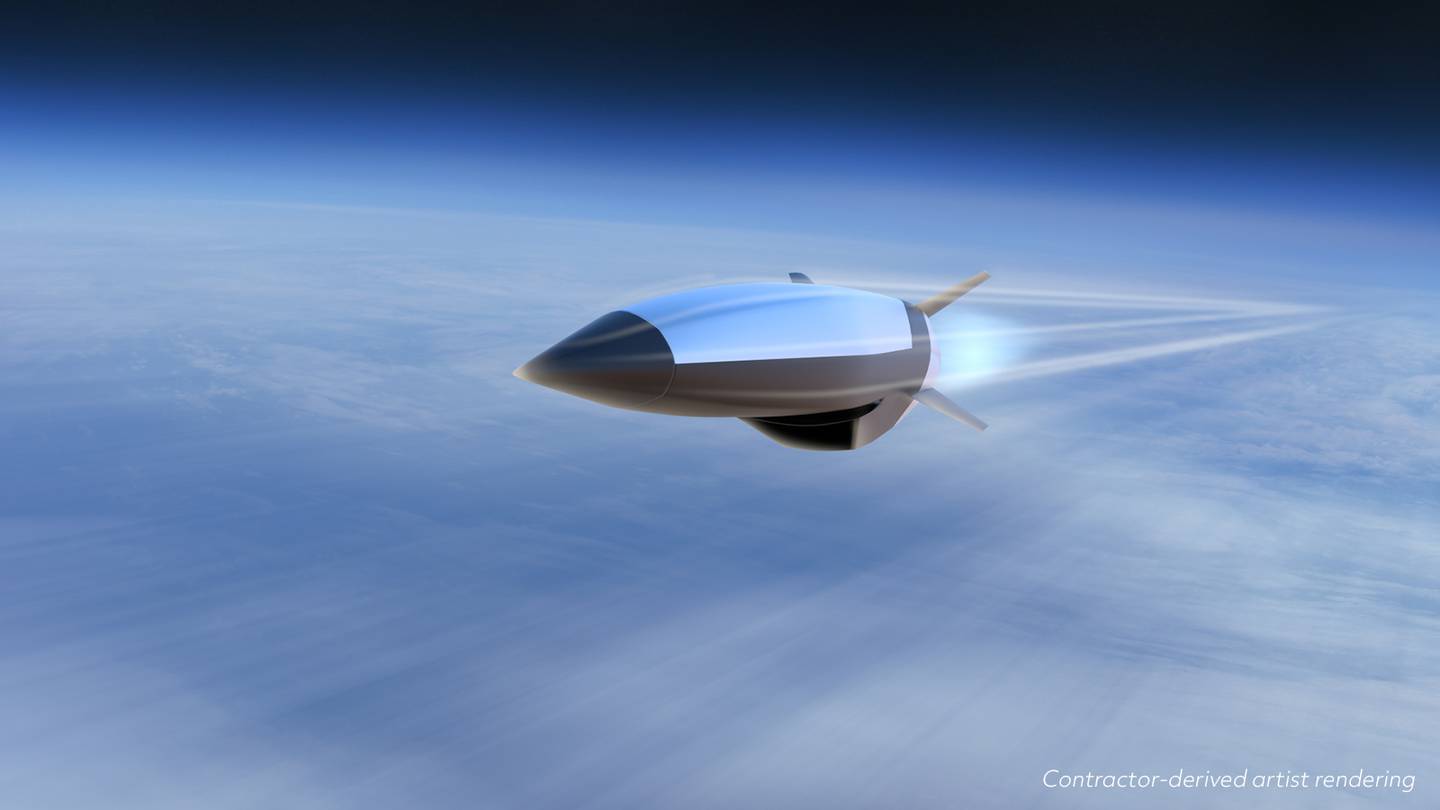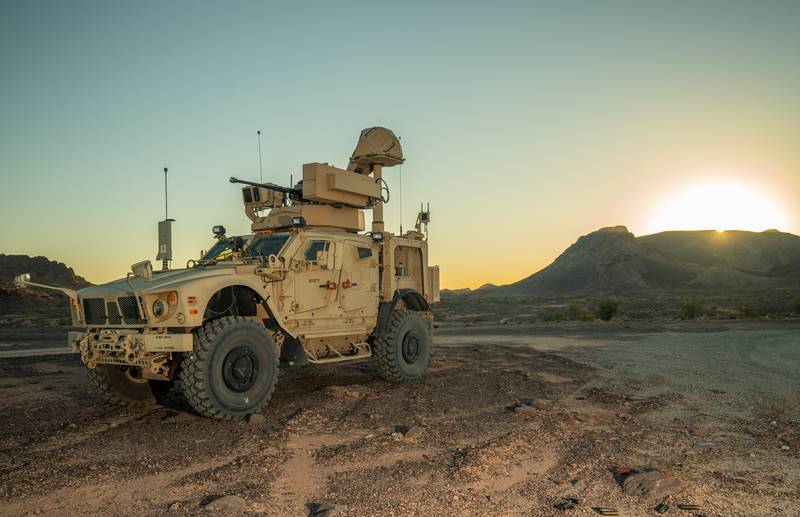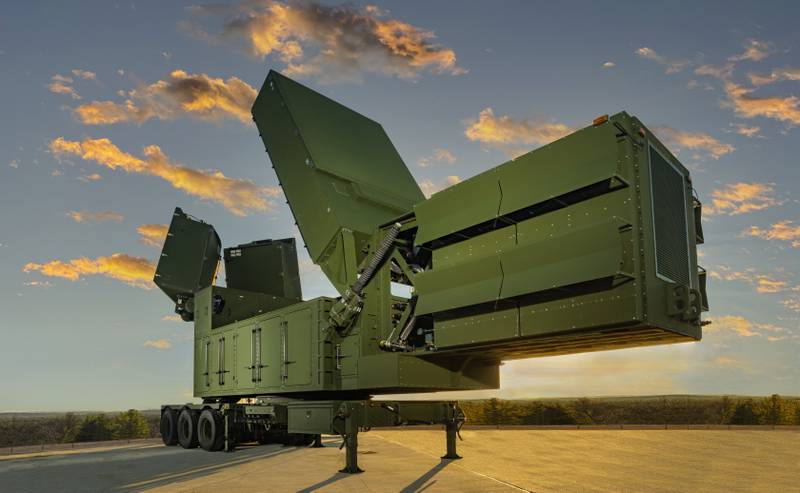The potential of hypersonic weapons has military leaders rethinking everything they knew about missiles.
A combination of speed — hypersonics can exceed Mach 5, or five times the speed of sound — maneuverability and flexibility means that hypersonics break the old rules of both missile defense and offense. Detecting, identifying and killing a missile that can nimbly maneuver at such high speeds creates a number of challenges when it comes to developing a good defensive plan. While maneuverable missiles have existed for quite some time, the speed of hypersonics adds a new dimension to how they can be used to attack targets.
But creating such a weapon is a major engineering challenge, and finding the right people is a top priority for the industry. In this Q&A, Raytheon’s Nate Szyba, hypersonic attack cruise missile program director, shares insights on the development of hypersonics, a recent contract award for development of the hypersonic attack cruise missile, and the importance of both people and partnerships in turning the program into a reality.
The transcript of this interview has been edited for length and clarity.
Defense News (DN): This is emerging technology, there’s still a lot to be discovered, but what are the skill sets that you need, from a personnel standpoint, to be able to make those discoveries and to be able to really push this program forward?
Nate Szyba (NS): Demand for quality engineers is definitely one of the top priorities for hypersonic programs. You see a lot of discussion on “we need hypersonics engineers.” And while that’s true, when you look at a program that’s developing hypersonic technologies, there are components that are really focused on the hypersonics aspect of it, such as the aerodynamics, the propulsion, and all the thermal-structural behavior. But then, there’s also a very large component of the program that is very similar to the stuff that we’ve been developing for years. So, we do need hypersonics engineers, but we also need more traditional engineers as well. We can put them all to work on this type of program. Electrical, mechanical engineers are key as well.
And I would also say that highly specialized engineers are very useful to us. But what I also value is engineers that have a broad systems understanding across the technologies within hypersonics and beyond, because everything that we do in hypersonics becomes very interrelated.
DN: That’s a really interesting point. You talk about the specialized engineers are great, but you also need just people with good solid engineering competencies. So, how do you define who you need for what roles? Or is it really just looking at, “OK, this person’s a really good mechanical engineer, so we can find a spot for them in the development of this program”?
NS: I’d say that is certainly true. We definitely want skilled engineers. And if somebody is, say, a mechanical engineer, we’ll start putting them to work as a mechanical engineer. And then, what happens naturally is it broadens because you have to interact with all the other different fields. Having that experience and, I guess, just acknowledgement that it is a cross-disciplinary field help from the get go, but it also happens naturally as you execute on one of these programs; you have to be able to be someone that steps outside of your boundaries.
DN: As an offshoot of that, what are the main engineering challenges that you’re facing? What are the big problems that you’re looking at and saying, “OK. How do we crack this one?”
NS: There are many of them. I would say material systems and processes is a key one. We have folks that are developing brand new materials in some cases. We can develop some components at a small rate today. So, we’re still learning exactly how all those materials work together. And also, more importantly, we’re still learning how we transition what we can build a handful of into something that we can build at a more reasonable rate.
DN: I’d like to talk a little bit about how you’re putting this into practice. Raytheon and Northrop Grumman were recently awarded the contract for the hypersonic attack cruise missile (HACM). What does that award mean for hypersonics development? How does that advance the cause here?
NS: The HACM program is a pretty substantial effort. It’s the first of its kind weapon that’s going to be fielded by the US Air Force. It’s really a sign that the Air Force is committed to developing these technologies. The Air Force has entrusted us with a tremendous responsibility, and we’ve talked earlier about how important it is, getting this system out in the field is critical for our war fighters. So, I’d say it’s a show of confidence that this technology has the ability to work on these systems to do the mission, and it’s the commitment that we are going to add these capabilities that we need to, to turn this system into an actual weapon system for the Air Force.
I’d also add that it shows the partnership that we have between the United States and our Australian partners as well. And it’s demonstrating that we are building these international partnerships to develop hypersonic capability for all of our parties that are engaged.
DN: And as you mentioned there, this is a show of faith that, “OK, now, we’re putting this into practical use.” But what’s the next milestone we should be looking for?
NS: The next milestones that’ll be coming up will be design reviews leading up to our flight test program. So, those will be the next major steps in showing the design maturity that’ll start feeding into the flight testing that we’ll have later in the program.
DN: And then, as we look at the HACM itself, what are its main capabilities? What is it that really sets it apart from current weapons in the arsenal?
NS: It’s an air-launched cruise missile. It’s got a Scramjet engine that uses the vehicle speed to compress the incoming air, which enables the combustion and enables a sustained hypersonic speeds, which is Mach 5 or greater. And so, what that really does is reduces your flight time, your time to target gets smaller or more responsive to threats. We also increase the weapon’s survivability, the effectiveness and its flexibility. So, these are all aspects that make the weapon more effective, I would say. We like to also think of it as a force multiplier where if you can bring a couple of HACMs to the fight, that basically extends the capability that you already have into perhaps more areas that you wouldn’t otherwise be able to engage in.
DN: We’ve touched a little bit on partnerships, but I want to explore that a little bit more. These partnerships you’ve mentioned, what role are they playing in the development of hypersonics?
NS: We are going to be doing some of our flight testing in Australia. So, taking advantage of the capabilities that the Australian flight test ranges will have on the program is going to be key. Beyond Australia, there are other partnerships that I mentioned somewhat before, partnerships with universities, relationships that are more than necessarily just building the workforce that we need to support these systems. The infrastructure at some of the universities is key to demonstrating hypersonic capabilities too. The University of Arizona is developing some hypersonic wind tunnel capability that we’ve been very closely involved in, which enables us to capture the data that we need on the ground to flesh out these technologies before we go and do the tests in the air, which is much more expensive. The more we can do on the ground, the better off we’ll be later on when we get to fight too.
We also collaborate with the Joint Hypersonic Technology Office out of OSD and are working very closely with them on developing some of the key technologies that we’ll need for these systems, both today and in the future. So, we’re working across the industry and the universities and so forth. And all those partnerships are very critical because this is an extremely difficult problem that we’re trying to solve as a nation, and we’re all needing to work together to bring the knowledge that everyone has to best breed capabilities to develop these systems.



